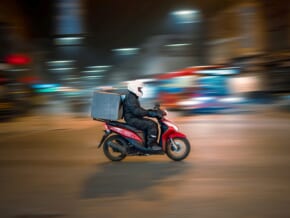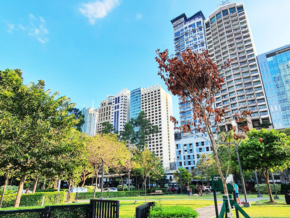How to Prepare for Earthquake: Things to do Before, During, and After
An initial quake of magnitude 5.4 struck the Batanes islands on 4:16 a.m. on July 27, 2019, north of Philippines, and followed shortly by an aftershock of magnitude 5.9, according to PHIVOLCS.
As of 8 p.m. of July 27, 104 aftershocks have been recorded by the DOST-PHIVOLCS seismic monitoring network.
Update on the 27 July 2019 M5.4 and M5.9 Itbayat, Batanes Earthquake as of 7:00pm today. #EarthquakePH #EarthquakeBatanes #HandaAngMayAlam pic.twitter.com/UKQUQYCtXB
— PHIVOLCS-DOST (@phivolcs_dost) July 27, 2019
Since we live within the Pacific Ring of Fire, everyone has to know what to do before, during, and after an earthquake. Here are things you should know for you and your loved ones to be safe:
Before an earthquake
![]() PLAN WITH YOUR FAMILY. Make sure everyone in the house knows what to do during an earthquake.
PLAN WITH YOUR FAMILY. Make sure everyone in the house knows what to do during an earthquake.
- Know/have an evacuation plan once an earthquake hits, including where to go, what to do, and what to bring in a go-bag
- Secure any objects within your home or office that might fall during an earthquake
- Prepare firefighting equipment
- Fires are the second most damaging part of an earthquake
- Practice DROP, COVER, and HOLD ON
- DROP to your hands and knees
- Take COVER under a sturdy desk/table
- HOLD ON to something until the shaking stops
- Read on information about earthquake safety, hazards, and preparedness from PHIVOLCS.
During an earthquake
 REMEMBER THESE DURING A QUAKE and you’ll survive.
REMEMBER THESE DURING A QUAKE and you’ll survive.
- If you’re indoors:
- Move away from windows, glass, and heavy objects.
- DROP, COVER, and HOLD ON.
- Wait until the shaking stops before getting out.
- If you’re outdoors:
- Head for an open space (park, parking lot, open field) and stay away from any buildings, street lamps, trees, or walls).
- Get on your hands and knees and stay low to the ground
- If you’re in a car, pull over to a clear area and stay in your car.
After an earthquake
- If you were indoors during the quake, grab your go bag and get out of the building. Use the stairs, NEVER THE ELEVATOR.
- Once out, stay away from damaged buildings.
- If an aftershock hits, DROP, COVER, and HOLD ON.
- Do not go back inside your house/building unless the authorities tell you it’s safe to do so.
It’s not much to remember, but if you remember these steps, you’ll be a lot safer when an earthquake hits. To ensure you’ll survive after being hit, make sure you prepare your go-bag. It’s a bag that has things essential to survival after a natural disaster.
Here’s what you need to put inside it:
- Water (at least 1.5 liters)
- Ready-to-eat meals (canned food, instant noodles, biscuits, etc.)
- Masks
- Flashlight and extra batteries
- Clothing (make sure it’s light and compact)
- First aid kit
- A two-way radio for communication and a portable radio for listening in on the news
- Powerbank (to charge your mobile device)
- Whistle
- Others:
- Copies of important documents
- Money
- Prescriptions (if you or anyone else in your family is on them)
Make sure these go into a sturdy bag that you can carry on your back. Remember: it’s an emergency bag, not something you would bring on vacation or a camping trip.
In case you forget any of these, make sure you bookmark this page so you can go back to it anytime.
Images grabbed from Rappler, Earthquake Country Alliance, DropCoverHoldOn.org
Feature image grabbed from listovative.com
Sources: Red Cross, SafeSteps.com, Rappler, CNN Philippines, evaq8.co.uk, PHIVOLCS













